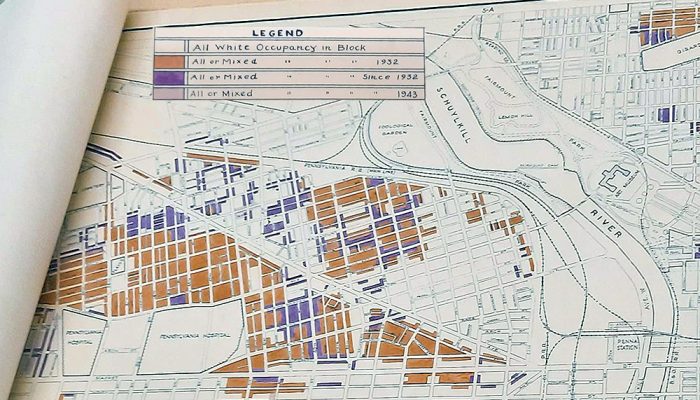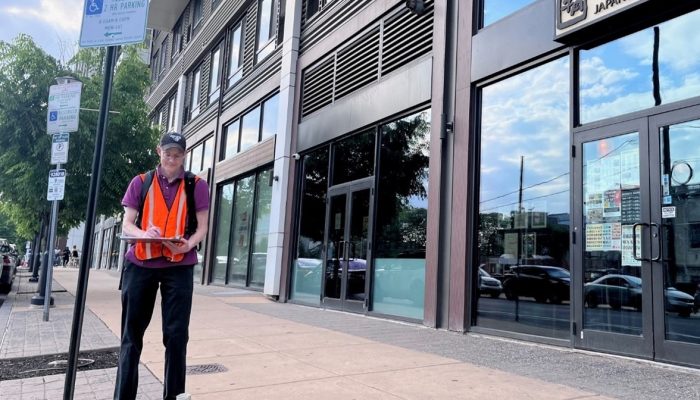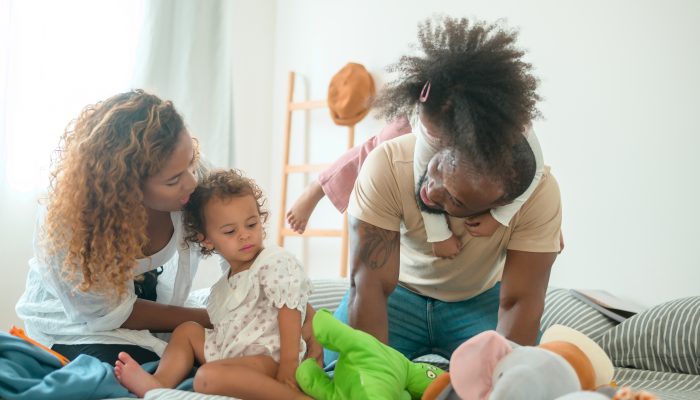Photo: 1943 map prepared by City of Philadelphia depicting neighborhoods by racial makeup.
2020 was a watershed year for most of us. COVID-19 gave us time to pause as we withdrew from regularly scheduled activities.
During that pause, Minneapolis police officer Derek Chauvin murdered George Floyd. Mr. Floyd’s murder began a national reckoning on past and present racial disparities.
My profession – planning – faced that same reckoning. The result isn’t pretty.
As a profession we have propagated the structures that maintain white supremacy. Our decisions kept Black and brown people out of “white” areas.
For some it is a difficult pill to swallow. It’s not why we got into planning.
Most of us became planners because we wanted to make our communities better places for all. Instead, we are contributing to systemic racism.
We missed the lessons of history that were right in front of us. We knew but did not know. We didn’t want to know more.
It took the murder of a man, filmed by a child, to wake us from decades of slumber. The year 2020 provided us with twenty-twenty vision.
Again, it’s not pretty. But it’s our history, and we have to own it.
Not only do we have to own it, we have to reckon with it and make amends.
How do we acknowledge our past? How do we move forward? How do we redress the harm we have caused?
There are many more questions, and the answers are not yet clear. What is clear is that we did not create “communities for all.” We did not include everyone.
And so, we have to change. And we have to urge other professions to join us.
Here in Philadelphia we have started that work.
We have begun an initiative – Re-Imagine Philadelphia – that will help us meet residents where they are, not where we want them to be or where we have placed them. Step one in that initiative is building trust with residents. Frankly, we don’t deserve it yet. But we’re working on it.
We’ve begun to bring planning to middle and high school students. Very few planners share the lived experiences of the communities in which they work. We need to fix that, and we do that by building relationships, and by listening.
We’re looking in the mirror. The Department of Planning and Development’s diversity, equity, and inclusion work looks to see how we can better serve both our residents and our colleagues.
Personally, I’m committing to this work. That’s why I signed “Commitment to Change.” It’s a statement acknowledging the role planners played in a past of systemic racism and segregation. It’s a pledge to work toward an equitable future.
I invite my colleagues from big cities to small towns to join me. Let’s work together to create a profession of inclusion and equity. Let’s reconcile with communities of color and lift the burdens they have borne – because of us – for far too long.
When planners look back decades from now, I hope they will see a profession that bent toward justice. I hope they will see a profession that recruited allies in fields we share work with. I hope they will see a profession that, when necessary, spoke truth to power.
When communities engage with planners, I hope they see a profession worthy of their trust. I hope we all see communities that are thriving for all people.
Let’s use this time of racial reckoning to dismantle systemic racism and work in concert with our neighbors to re-set, re-educate, reconcile, and redeem our actions – for the benefit of all.




